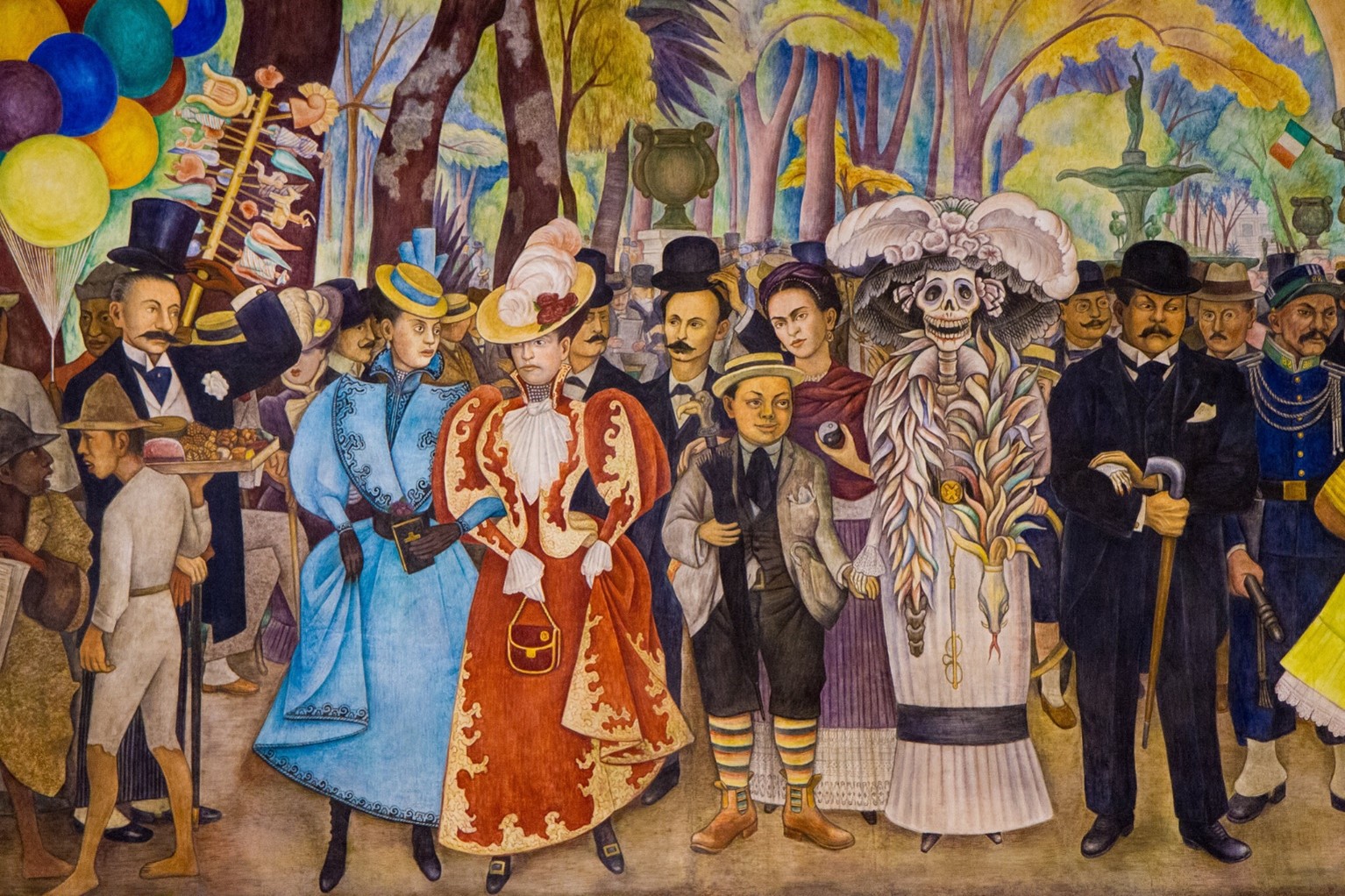Patron Login
Having trouble accessing resources like O'Reilly from a MCEN machine? Try from a personal device/network. We're working on this issue.
Día De Los Muertos
 Processing Request
Processing Request
The Day of The Dead
El Día De Los Muertos (The Day of the Dead), is one of Mexico’s most widely celebrated annual holidays, where people celebrate life and death by honoring their ancestors and keeping their memories alive. This wonderful tradition is held on November 1st and 2nd across all of Mexico, and has been adopted in other parts of the world. The culture is celebrated with love and humor, as seen with the various fun activities that surround the holiday.
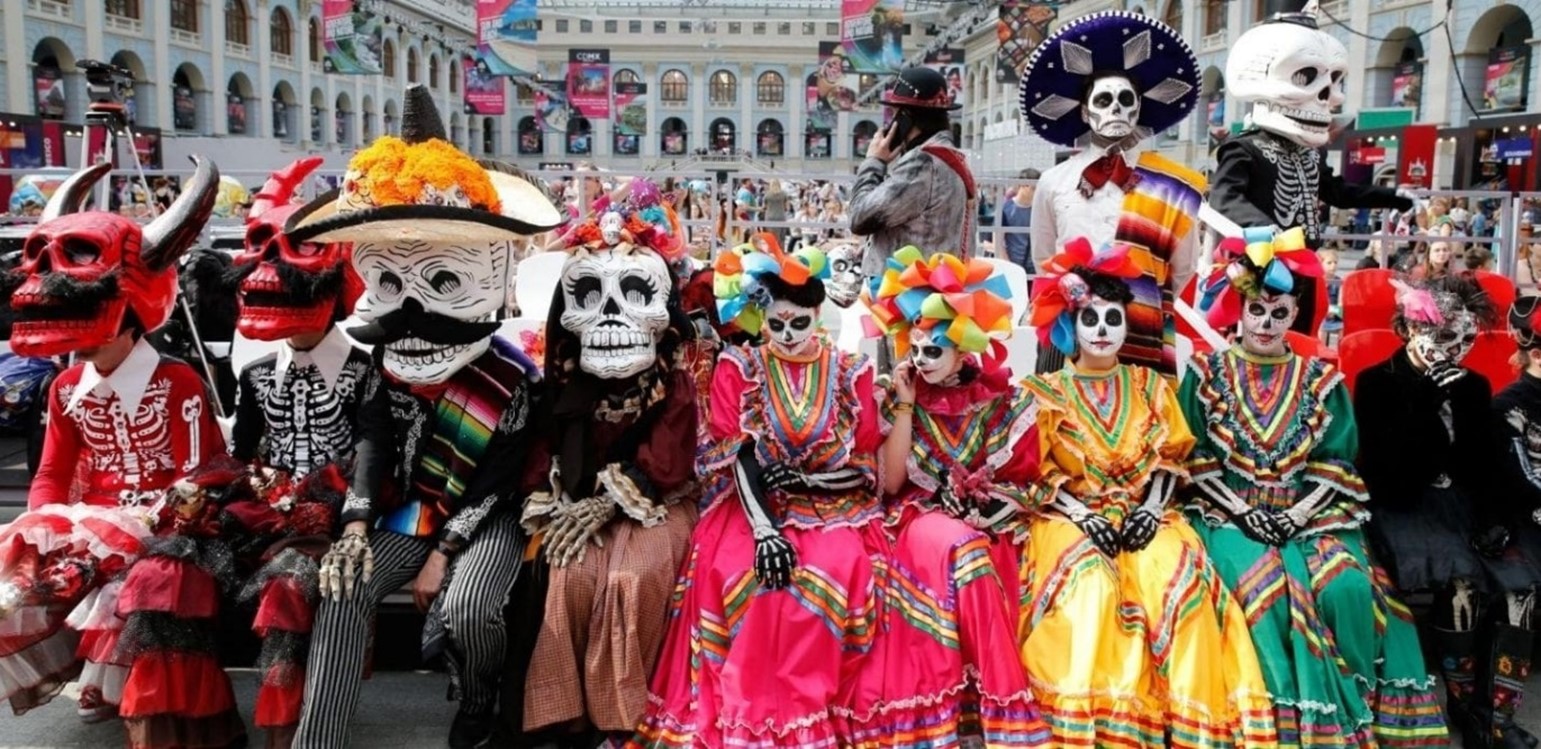
Ofrendas
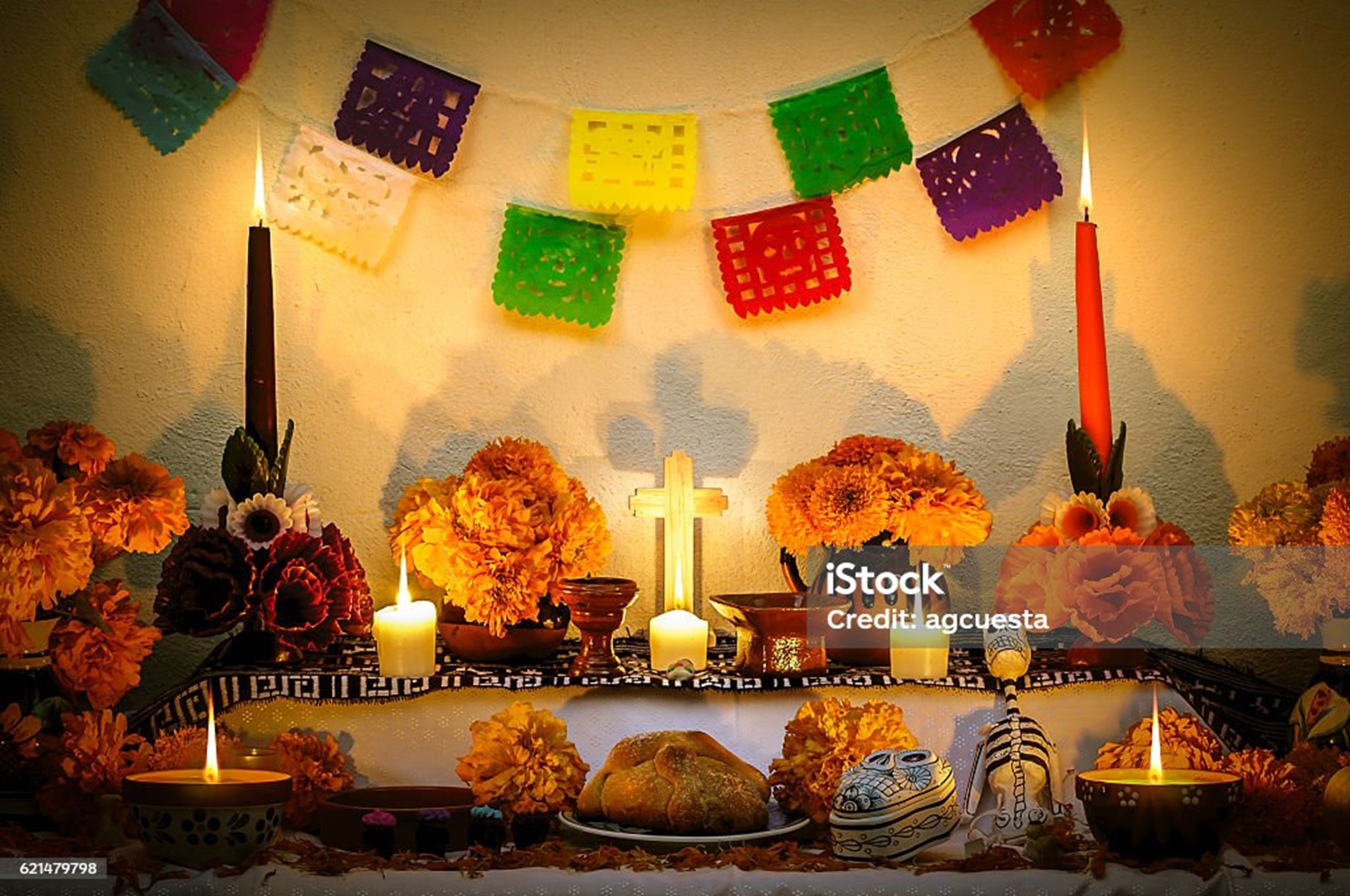 According to the Mexican Museum (2023), “To welcome the dead, families build altars, or ofrendas (Spanish), in their honor. These altars have a series of different components that vary from one culture to another that mostly include yellow marigolds, candles, photos of the deceased ones, papel picado or cut tissue-paper designs, as well as food and beverages offerings for the dead.” Some families follow the Aztec tradition of adding four levels to their altars, representing the four stages of life (birth, childhood, adulthoold, and old age), the four elements: air, water, fire, and wind, and the four seasons (Stalcup, 1995).
According to the Mexican Museum (2023), “To welcome the dead, families build altars, or ofrendas (Spanish), in their honor. These altars have a series of different components that vary from one culture to another that mostly include yellow marigolds, candles, photos of the deceased ones, papel picado or cut tissue-paper designs, as well as food and beverages offerings for the dead.” Some families follow the Aztec tradition of adding four levels to their altars, representing the four stages of life (birth, childhood, adulthoold, and old age), the four elements: air, water, fire, and wind, and the four seasons (Stalcup, 1995).
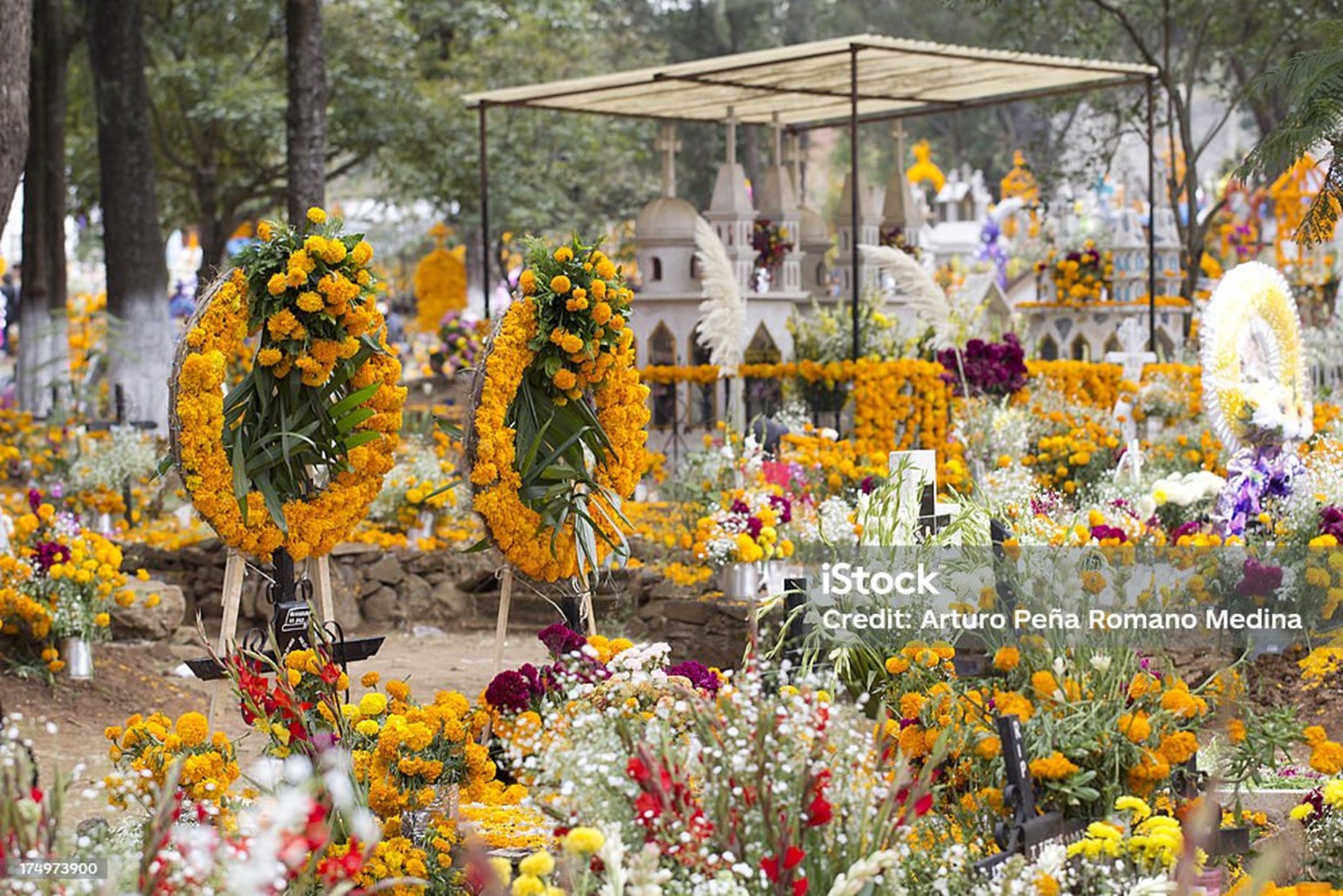 Graveyards
Graveyards
Families also visit their past loved ones at graveyards, where they sweep and scrub the tombstones and decorate them with colorful orange marigolds known as Cempoalxóchitl (the Aztec name in Nahuat language) or cempasúchil (Spanish). The marigold’s scent is used to guide the dead to their living family members. According to Stalcup (1995), “the marigold’s brilliant orange color is considered the sacred color of the land of the dead.”
Gatherings & Food
During the night, families gather at gravesides or at home, where they flicker candlelights and rejoice about the many wonderful and humorous stories of their past loved ones. Families also enjoy meals with each other, eating tasty and sweet foods like pan de muerto (bread of the dead) and drink champurrado (a delicate hot chocolate drink made with dough).
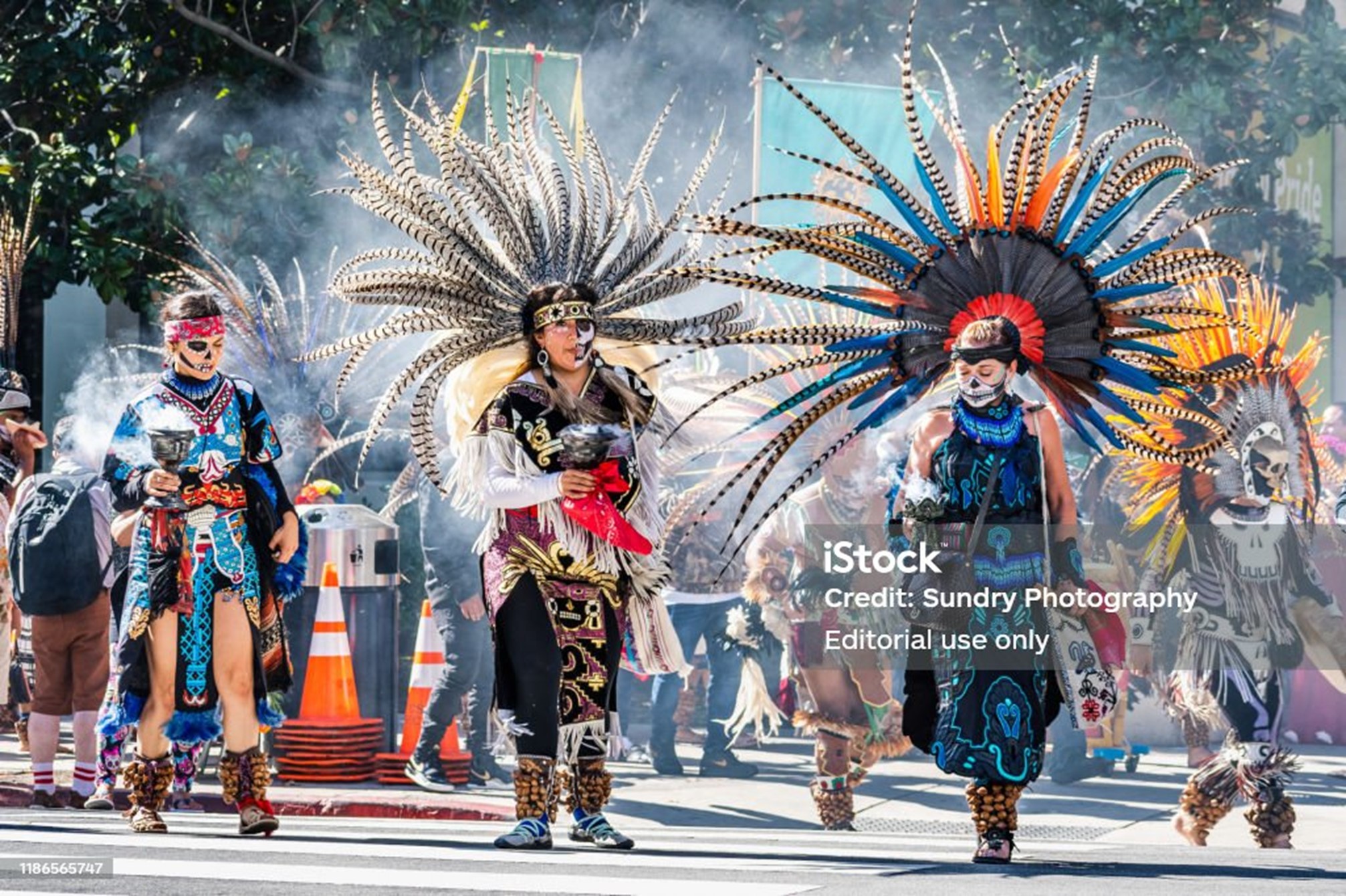 Parades
Parades
In many parts of the world, communities participate in parades and vibrant ceremonies to celebrate this rich tradition. For instance, in Los Angeles, California, The Olvera Street Marchants Association Foundation puts on a spectacular show that incorporates pre-Columbian, Aztec, Mayan, and Catholic rituals surrounding death. During these events, there is music, dancing, sugar skull face-painting, and theatrical performances such as, “La Danza De La Muerte” (The Dance of the Dead). There is even a 5k run/walk in Downtown LA in honor of Día De Los Muertos.
The Monarch Butterfly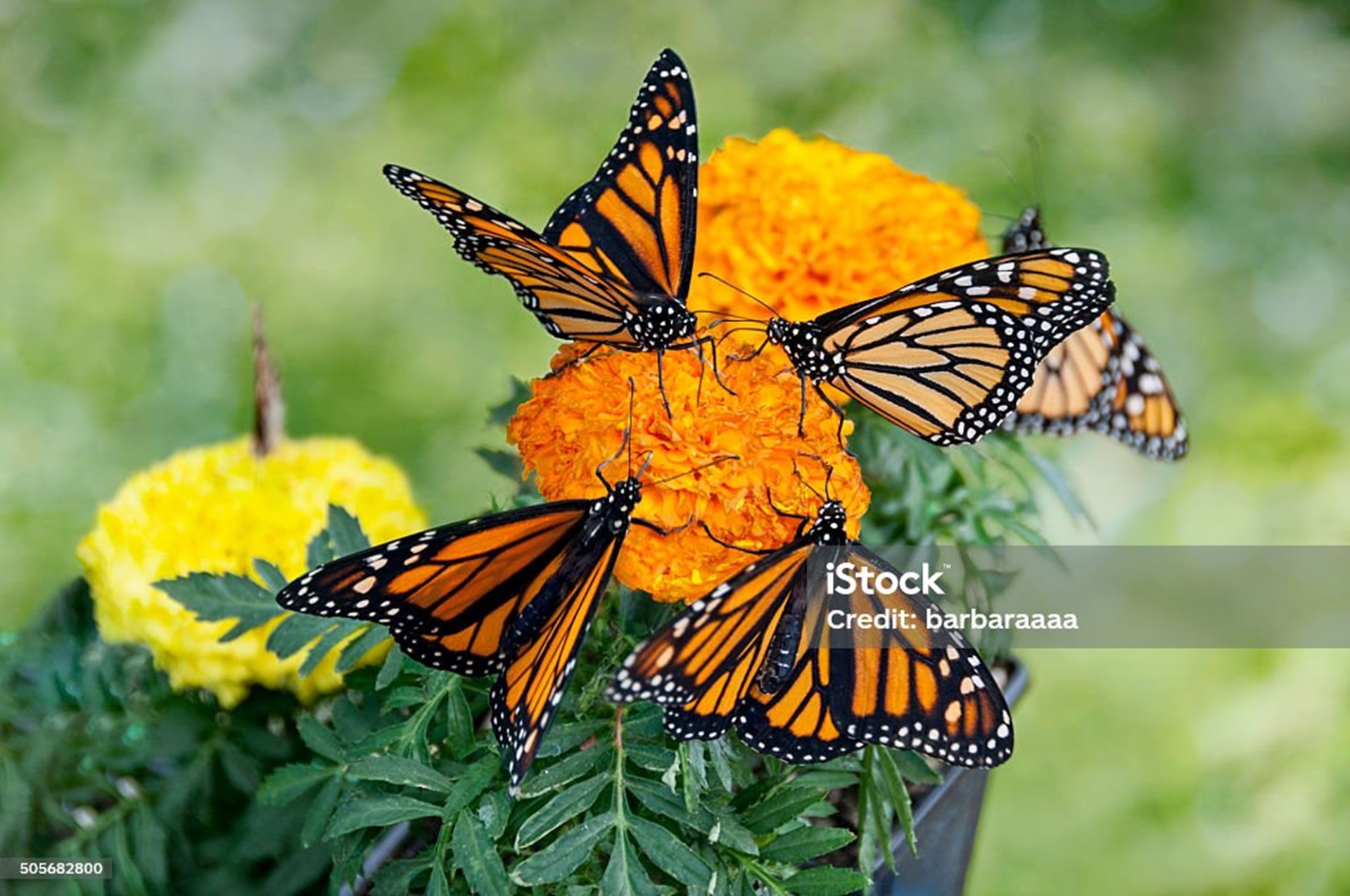
The monarch’s arrival in Mexico is not only a beautiful sight, but also a prominent significance, as millions of these orange creatures coincidentally descend upon central Mexico on Día De Los Muertos. According to Gonzales (2022), the ancient Purépecha people of northwestern Michoacán believed that the the Monarch butterflies are the spirits of our loved-ones and ancestors returning every year on the Day of the Dead.
A prominent figure during Día De Los Muertos is La Calavera Catrina, as represented by Mexican illustrator Jose Guadalupe Posada. La Catrina is depcited as a female skeleton adorned with an elegant dress and feathered hat, as a satirical illustration of the early 1900s. However, according to Ingram (2019), La Catrina is not Mexico’s first grand lady of the dead, as the queen of the Aztec underworld was known as Mictecacihuatl. Mictecacihuatl ruled the alnd of Mictlan, where her primary duties were to guard the bones of the dead as well as the festivals of the dead.
La Catrina became even more popular after notable artist, Diego Rivera included her as the focal point in of his most popular murals called “Dream of a Sunday Afternoon in Alameda Central Park” (pictured left. Click on the image to see the full mural.) This mural exemplifies La Catrina in arms with Jose Guadalupe Posada, Frida Kahlo by her side, and Diego himself as a young boy holding La Catrina’s right hand.
Shadow Mountain Branch Library, MCAGCC 29 Palms
At the Shadow Mountain Branch Library, aboard the MCAGCC 29 Palms, staff decorated the library with a Frida Kahlo sugar skull to showcase the artistic side of Dia De Los Muertos. This allowed patrons to inquire about who Frida Kahlo was and how Día De Los Muertos is celebrated.
Staff also created a beautiful calavera (skeleton) coloring collage for kids to paint. This activity was designed for several programs in the library, including Hispanic Heritage Month and “Read Around the World,” where we showcase the many traditions and celebrations of different countries, with this month being Mexico!
Want to read more about Día De Los Muertos at your DoD Libraries? Check out related titles in our physical collection here and our DoD Overdrive collection here! For more learning resources and family activities, check out the National Museum of the American Latino's Day of the Dead Virtual Exhibit and Resources page.
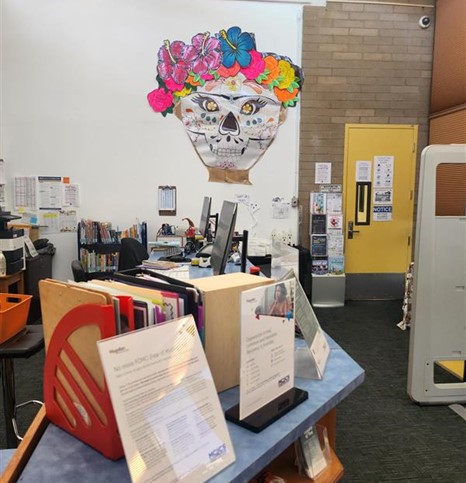

References
Agcuesta. (2016). Burning candles, skull with marigold flowers and garlands. Dia de los muertos day or day of the dead. [Photograph]. Istock. https://www.istockphoto.com/photo/mexican-day-of-the-dead-altar-dia-de-muertos-gm621479798-108544685
Barbaraaaa. (2016). Monarch butterflies on marigold flowers stock photo. [Photograph]. Istock. https://www.istockphoto.com/photo/monarch-butterflies-on-marigold-flower...?
Colnihko. (2020). Mexican day of the dead altar "Dia de Muertos" stock photo. [Photograph]. Istock. https://www.istockphoto.com/photo/burning-candles-skull-with-marigold-flowers-and-garlands-dia-de-los-muertos-day-or-gm1268120199-372164559
Hayaship. (2022). Day of the dead snack top view. [Photograph]. Istock. https://www.istockphoto.com/photo/day-of-the-dead-snack-top-view-gm14304...?
HECHO. (2022). The connection between the monarch butterfly and día de los muertos. https://www.hechoonline.org/blog/the-connection-between-the-monarch-butt...
Ingram, S. (2019). National Geographic. La Catrina: The dark history of Day of the Dead's immortal icon. https://www.nationalgeographic.co.uk/history-and-civilisation/2019/10/la...
Medina, A. (2012). Day of the dead stock photo. [Photograph]. Istock. https://www.istockphoto.com/photo/day-of-the-dead-gm174973900-22282551
The Mexican Museum. (2023). Día De Los Muertos. https://www.mexicanmuseum.org/dia-de-los-muertos
Olvera Street Merchants Association Foundation. (2023). Dia de los muertos. https://www.olveraevents.com/day-of-the-dead-olvera-street
Stalcup, A. (1995). El Dia de los Muertos, the Day of the Dead: A Mexican celebration. Skipping Stones, 7(4), 18. https://link.gale.com/apps/doc/A17465991/PPDS?u=usmchq&sid=bookmark-PPDS&xid=0636b683
Sundry Photography. (2019). Participants at the Day of the Dead (Dia de Los Muertos) procession carrying offers; stock photo. [Photograph]. Istock. https://www.istockphoto.com/photo/participants-at-the-day-of-the-dead-pr...?
-modified.png)
